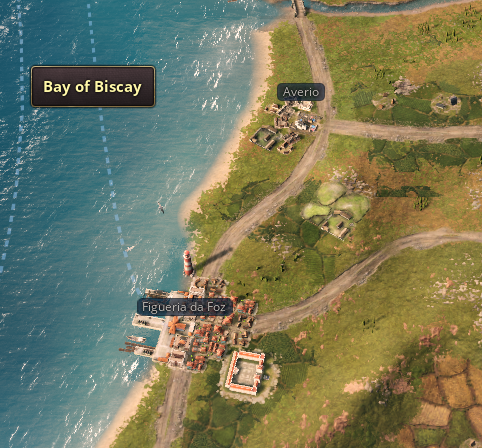Hi, I am from
Paducah, Kentucky. In EU4, there is a westernmost province within Kentucky that is named Paducah if controlled or owned by a nation of British culture. HOWEVER, Paducah, a city originally settled around 1821, and formally incorporated in 1830, and which sat at or near
four rivers (Ohio, Mississippi, Tennessee, Cumberland) and is relatively mid-way between Chicago, St. Louis, Louisville, and Nashville (the latter of which aforementioned Cumberland River passes through), is not shown on the map. It is from the presence of four rivers nearby that Paducah had developed a considerable river industry complete with dry-dock facilities and such.
Paducah also sits at a junction of railroads from Illinois (
Illinois Central Railroad, incorporated in 1836 but apparently operating from 1851 until 1999 when it was acquired by Canadian National Railway) and from Louisville (a line formerly owned by Illinois Central; now known as
Paducah & Louisville Railway). It was of such importance in the railroad industry that it had the works and the shops built in the city to serve the railroad networks there, most of them built before 1936. Illinois Central even had a hospital built for railroad workers (now called Katterjohn Building and which was disgracefully left in ruinous state by its present owner at the time of this writing). The legacy, the impact, and heritage of the river and rail industries together in the city are such that the city now have museums dedicated to them (River Discovery Center and Paducah Railroad Museum, respectively).
Moreover, its strategic importance can be seen in the fact that it was the first town in the
then-neutral border state of Kentucky during the American Civil War (Note 1) that was occupied by then-unknown Union army general
Ulysses Grant, who would later rise to fame, in response to the occupation of Columbus, Kentucky, by Confederate general
Leonidas Polk (an act that arguably violated the neutrality of Kentucky). It was from this town that Grant would eventually launch the invasion that culminated in the capture of the forts at Columbus and Belmont, Missouri, the latter opposite across the Mississippi River from Columbus.
Furthermore, the city had population of over 33,000 by 1930, six years before the end of the timeframe covered by Victoria 3. And this is despite the great floods of 1927 and 1937 (though, the latter is obviously just shy beyond the Vicky 3 timeframe). Frankly, I think that, given its geographic location as I described above, it was almost inevitable in any alternate history to become a city of significance. Its continuing significance today can be seen much later in that the
Interstate 24 which passed through Nashville was routed and built near the city at its inception in early 1970s.
Today, its population is now 27,000; while that was a decline from the 1960 peak of over 34,000, its continuing significance meant that it did not suffered the dramatic decline that the nearby city of Cairo, Illinois (which sat on confluence of Ohio and Mississippi River) suffered (whose population is now a bit over mere 1,700, a stark contrast to its 1920 peak of over 15,000). (Note 2) Moreover, the decline in Paducah's population in last several decades masked the continuing importance of the city in that the county it is part of (and the seat of),
McCracken County, contained a population of over 67,000 (and which actually had been growing during the same period in contrast to the city, a situation not unlike most of their big-city peers whose population was lost to the suburbs surrounding them) and that it is the hub of
Paducah micropolitan area with a population of over 98,000. (Note 3)
Finally, a fun fact: there is also Paducah, Texas, that were apparently named by the settlers who came from... wait for it... Paducah, Kentucky!
NOTES
Note 1: Kentucky, as one of the four border states and on account of its location, was apparently so critical to the war that Abraham Lincoln said "I think to lose Kentucky is nearly the same as to lose the whole game."
Note 2: The dramatic decline of Cairo, Illinois may be attributed to the construction of bridges, in 1905 (railroad) and 1929 (road) respectively, nearby that by-passed the city and to the opening of
Interstate 57 (which, by the way, is connected to aforementioned Interstate 24) in 1978 which also by-passed Cairo.
Note 3: Paducah actually had its population increased recently for the first time according to 2020 census, a reverse of the trend that had been ongoing for over four decades since 1970 census when it begin to show decline. Moreover, none of the declines in the U.S. censuses shown for Paducah, Kentucky, were double-digits unlike that of its peer Cairo, Illnois. The latest increase in city's population may be largely due to the ongoing city renaissance efforts that emphasized revitalization through the arts and the culture that centered around its status as the Quilt City (with the national quilt museum) and the Artist Relocation Program in its Lower Town district. It is from these efforts that resulted in the city gaining the UNESCO Creative City designation, a rare honor indeed for a city of its size.






























